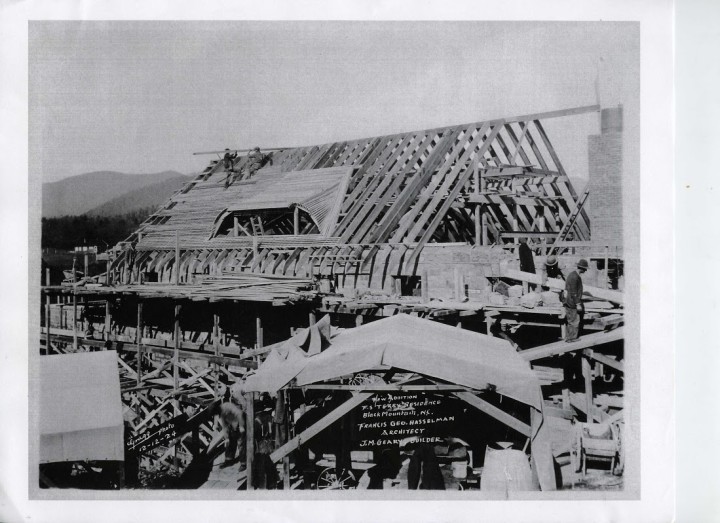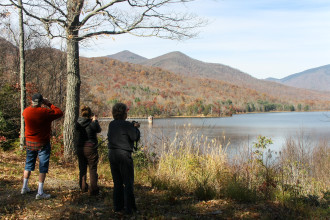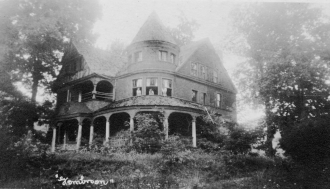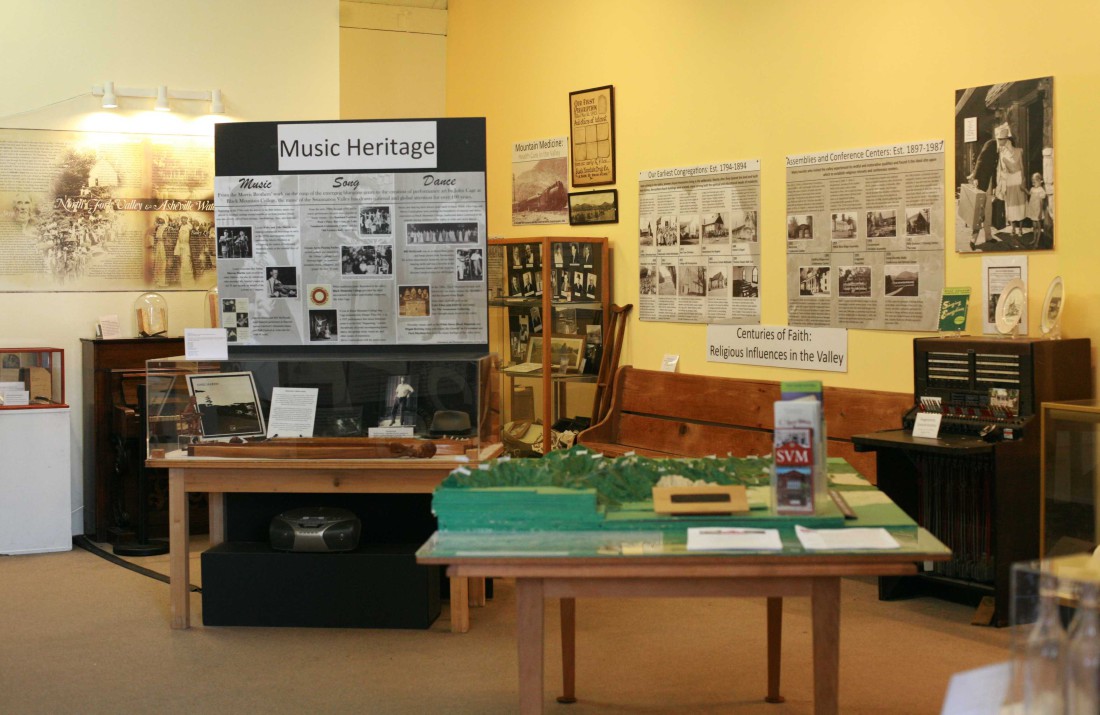With spring upon us, and signs of new growth popping up all around Western North Carolina, it’s easy to forget the roots of local history that form the foundation of our present grandeur. For the Swannanoa Valley Museum, however, the spring season is an excellent time to remind people of what came before and the foundations that facilitate growth. The museum is launching its 2015 season with two new exhibits exploring two events that changed the landscape and demographics of eastern Buncombe County.
The first exhibit focuses on artifacts and documents related to the English Tudor estate In The Oaks, now part of Montreat College just north of Black Mountain. Built between 1920 and 1923 by Frank E. Wallis, an assistant in the construction of Biltmore Estate, In The Oaks was owned by Franklin S. Terry, a vice president of General Electric at the time, and his second wife (and cousin) Lillian Emerson.

“In The Oaks was really built as a party house and vacation getaway for the Terrys,” says SVM Director Christina Ruiz. “Mrs. Terry had connections to the area through the Purley family,” who owned local area railroads. The 24,755 square-foot home was the second largest private residence in North Carolina in its day, and was known for its expansive leisure activity offerings, including a golf course, tennis court, gymnasium, swimming pool and bowling alley. “In The Oaks was one of the first houses in the area with running water and electricity,” adds Ruiz, due to Franklin Terry’s involvement with Edison and GE.
It was also built to conceal illicit activity in the midst of the prohibition era. Ruiz describes secret passages throughout the house, as well as a large hidden wine cellar that could store up to 744 bottles of wine. “It’s one of those hidden local gems that I don’t think many people know about,” she says.
The SVM will be highlighting the everyday life of the opulent Terry family through household objects used during the period and photographs taken at the time. The museum hopes to use this exhibit as an example of just one of the many grand architectural achievements local to the Asheville area in the early 1900s, and to provide context prior to a special tour of the property the museum has planned for October this year.
The second featured exhibit for 2015 paints a starkly different portrait of the valley’s history during this time period, focusing on the now-defunct and submerged North Fork Valley settlement and its eventual demise at the hands of the city of Asheville. Once a vibrant hamlet and ecologically diverse area located under the shadow of the Craggy Mountains, the settlement at one point boasted several churches, a law school and former N.C. governor Zebulon Vance’s summer home, as well as being a popular tourist stop on the way to Mount Mitchell.
“It’s amazing when you hear about some of the prominent families who lived there, such as the Vances and Burnetts, and how they were really just kicked off their land,” says Ruiz.
Starting at the turn of the 20th century, North Fork Valley land was bought or confiscated piecemeal by the city of Asheville, which was seeking new sources of fresh water to accommodate its rapidly growing population. Using eminent domain and other practices, the city eventually acquired 22,000 acres of the valley from about 50 families who had claims to the land.

Ruiz elaborates: “Some folks left willingly, but others really fought tooth and nail to keep their land. While the practice of eminent domain does provide compensation for landowners, much of those family’s money was stored in the bank, and ultimately lost in the stock market crash. There were a lot of bittersweet feelings about that for a long time around here.”
The North Fork community was eventually wholly evacuated and flooded to create the Burnett Reservoir, leaving few remains buried in the wilderness of the town and people who once inhabited the area. “We received permission a couple years ago from city officials to go back there and document the site,” says Ruiz, who sees the events surrounding North Fork as somewhat of a double-edged sword.
“In its day, the North Fork Valley hosted many firsts for the region, including the Bailey law School, one of the first ones in the area, as well as the Gombroon Wall, one of the first public works projects of its kind, financed by Zebulon Vance to provide local residents with enough money to get by.
“At the same time, the creation of the reservoir saved that land from being developed and altered. Going back there now is like catching a glimpse of pristine wilderness, before European settlers arrived. It’s difficult to find such a place untouched by human development these days.”

SVM has produced maps, photographs and artifacts found at the North fork site in a compelling display that, when taken in with the In The Oaks exhibit, offer a striking glimpse of the contrasts existing in a small community during a time of rapid national growth and changing demographics. The museum has been granted permission by North Fork Reservoir officials to conduct several tours into the old settlement site, and hopes that this display will generate interest in a largely-forgotten piece of local history.
The exhibits will be on display from now until the end of the season at the Swannanoa Valley Museum, located at 223 West State Street in Black Mountain, NC. The museum is open Tuesdays through Saturdays from 10 a.m. through 5 p.m. through the rest of the year until Oct. 31. Admission is free to the museum, which is a registered non-profit organization.
Those interested in learning more about the exhibits and subsequent on-site tours, the Swannanoa Valley Museum, or other special events or programs hosted or sponsored through the museum are encouraged to contact SVM at info@swannanoavalleymuseum.org or (828) 669-9566, or to visit their website at www.history.swannanoavalleymuseum.org.



Before you comment
The comments section is here to provide a platform for civil dialogue on the issues we face together as a local community. Xpress is committed to offering this platform for all voices, but when the tone of the discussion gets nasty or strays off topic, we believe many people choose not to participate. Xpress editors are determined to moderate comments to ensure a constructive interchange is maintained. All comments judged not to be in keeping with the spirit of civil discourse will be removed and repeat violators will be banned. See here for our terms of service. Thank you for being part of this effort to promote respectful discussion.